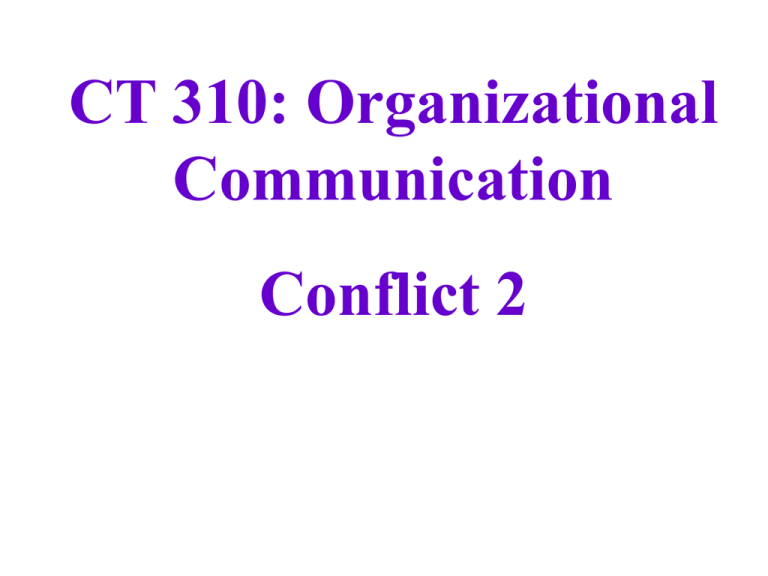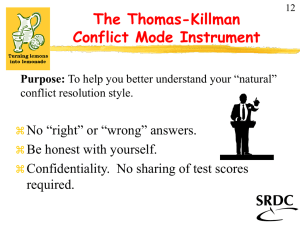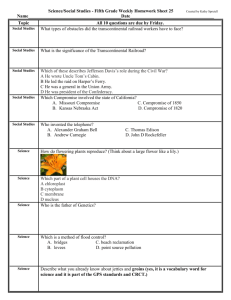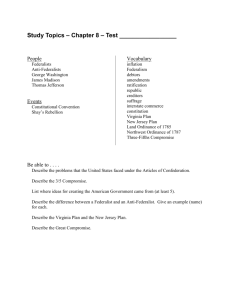CT 310: Organizational Communication Conflict 2
advertisement

CT 310: Organizational Communication Conflict 2 Kilmann and Thomas Conflict Management Model assertion compete concern for self collaborate compromise non-assertion avoid non-cooperation accomodate cooperation concern for other avoiding = little concern for self or other • ignore conflicts • invoke slow procedures • put problems on hold • secrecy When to avoid: • issue is trivial • no chance of winning • negative potential outweighs benefits • cool off to regain perspective accomodating = giving in • submission • compliance • going along with • obedience when to accomodate: • when you are wrong • when it is more important to others • build credit for later • when harmony is crucial competing = trying to get your way. • win-lose • lose-lose • forcing submission when to compete: • you are right • quick action is needed • unpopular action is needed • when you are up against people who take advantage of cooperative behavior compromise = get part of what you want is this glass half full, or half empty? compromising behaviors: • negotiation • looking for deals • tradeoffs when to compromise: • people are equal in power and have mutually exclusive goals • temporary settlement • deal with time pressure • when goals are important but so are the relationships • as a backup to compromise or collaboration collaboration is the team approach • problem solving • confront differences by sharing ideas and information • search for integrative solutions • win-win collaborate when: • both sets of concerns are too important to be compromised • to merge insights from people with different perspectives • to gain commitment thru consensus • to work through problems which have interefered with a working relationship Personality and conflict management • win-lose battler = internal control, takes risks, aggressive • friendly helper = external control, no risks, trusting • problem solver = internal control, trusting, respectful WL WL FH PS stalemate FH PS WL WL stalemate PS consensus


